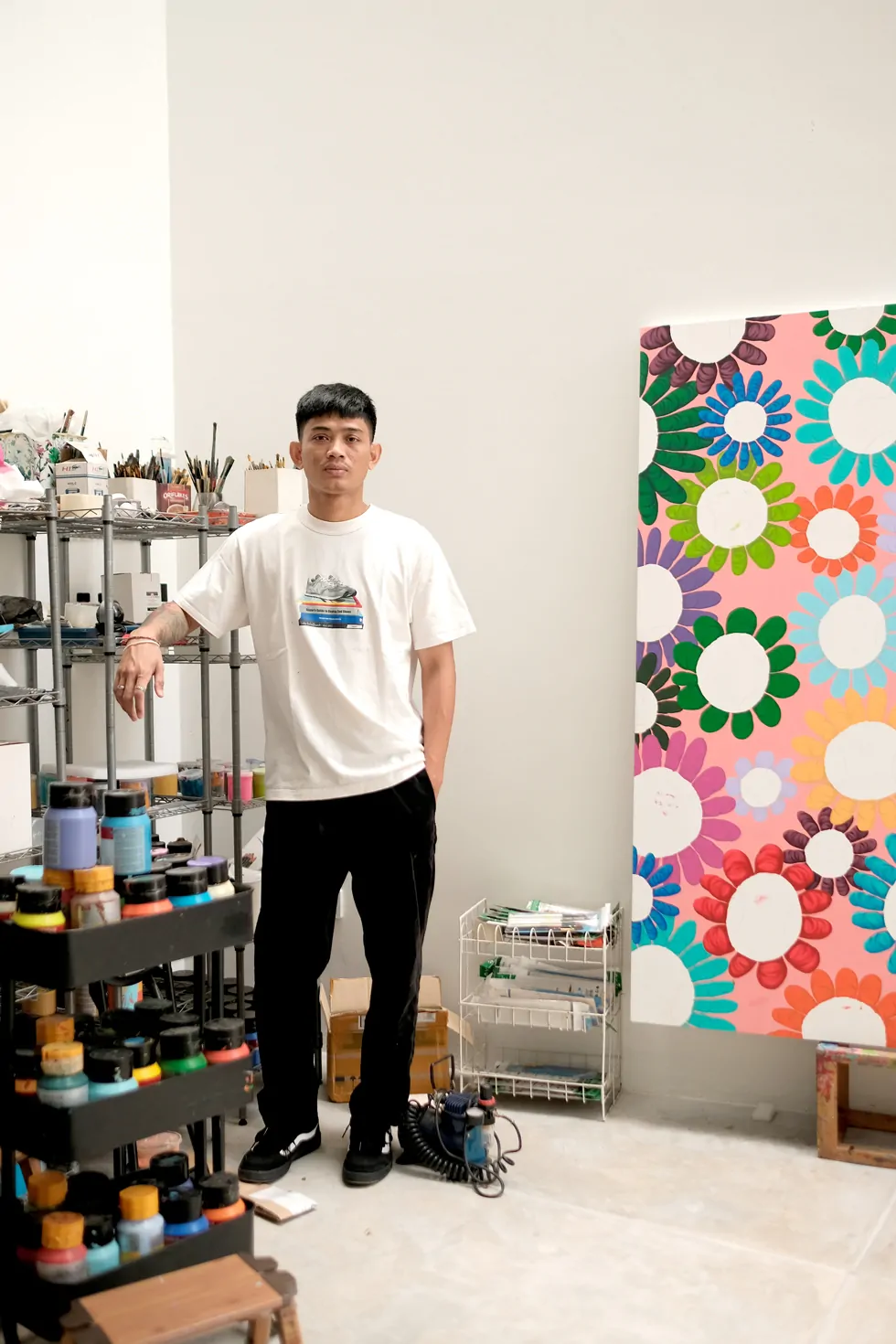Balinese artist Suanjaya Kencut transforms childhood play and cultural memory into button-eyed dolls that probe innocence, fragility and identity.
In Suanjaya Kencut’s canvases, it is the dolls who speak. They gaze out with button eyes—mute, unblinking, strangely tender, plush as though you could lift them from the surface and hold them close. They carry stories stitched from Balinese myth, childhood play, and the frictions of modern life. At once innocent and unsettling, they feel older than their toy-like forms suggest, as if burdened with secrets their button eyes will never let slip.
It is hard not to be drawn to them. Kencut’s painted dolls are lush with colour and detail, radiating a kind of awe; so vivid they almost seem real to the touch. Perhaps I have already said that, but the urge to repeat it is difficult to resist.

To me, the button becomes a symbol of sincerity without pretension. It does not display the “soul” directly, but instead allows us to see optimism and vulnerability in a more subtle way
Suanjaya Kencut
Raised in Bali and trained in Yogyakarta, Kencut calls his philosophy simple: life is like a doll. It sounds almost childlike, but his paintings stretch the statement into allegory. Dolls can be vessels, masks, mirrors. They absorb meaning and emotion, yet never quite reveal their own. In this way, his figures become avatars of contemporary existence—fragmented, performative, yet stubbornly human.
Much of this imagery is rooted in memory. The saturated spectacle of Barong performances, the looming presence of ceremonial puppets, and the dense repetitions of temple ornamentation all seep into his visual language.
Later, fashion and textiles added new layers, fusing tradition with contemporary sensibilities. The eyes, cold and uniform, operate as symbols of the subconscious—a place where emotions and identities are stored beneath carefully constructed surfaces. His compositions, often fractal in rhythm, recall both the ornamental repetitions of Bali and the endless cycles of human life.
This month at New York’s GR Gallery, Kencut joins FREAKS, a group exhibition that borrows its title from Tod Browning’s 1932 cult classic. The artist unveils a new series in which his signature dolls are fragmented, multiplied and arranged in layered patterns—abstractions that carry a strange allure, at once unsettling and irresistible. Sharing the space with Kazy Chan and Satoru Koizumi, Kencut works in a vocabulary of tenderness and unease, a balance that has long defined his practice. The pieces hum with contradictions: the beauty of human imperfection, innocence refracted through the uncanny—and this is where Kencut’s work finds its charge.
In the end, Kencut’s dolls are not an escape but a mirror. Stitched and silent, they hold contradictions we carry in ourselves—fragility and resilience, innocence and unease. They remind us that identity is never seamless but something pieced together, broken and mended, always in motion. We are all, in one way or another, stitched together.
Read full article at
